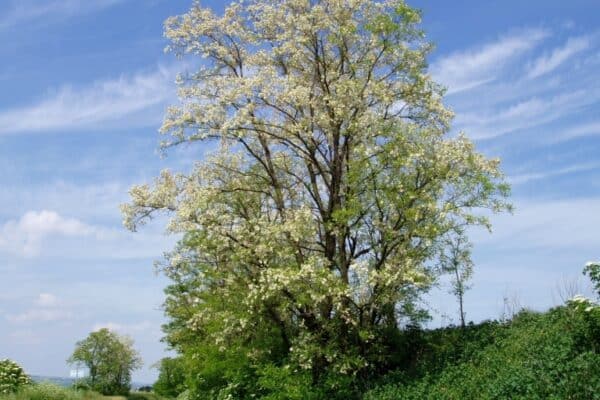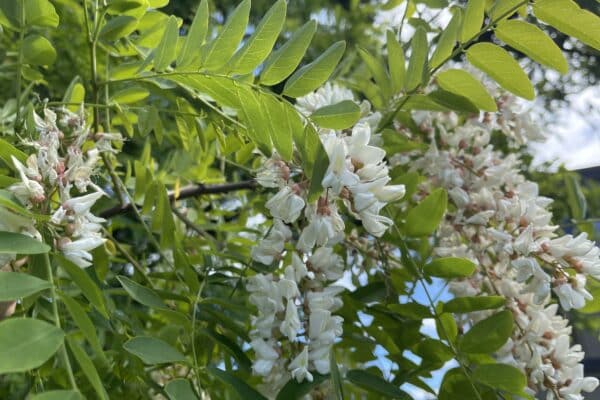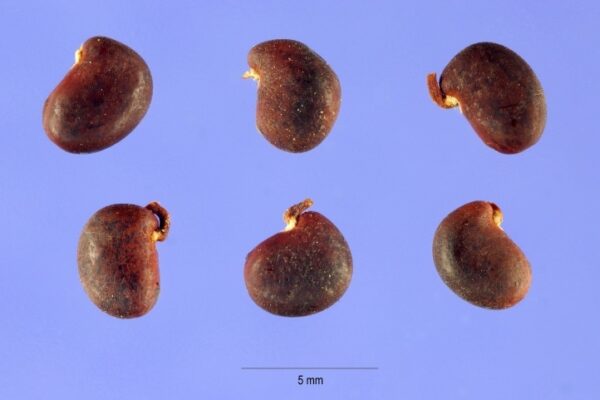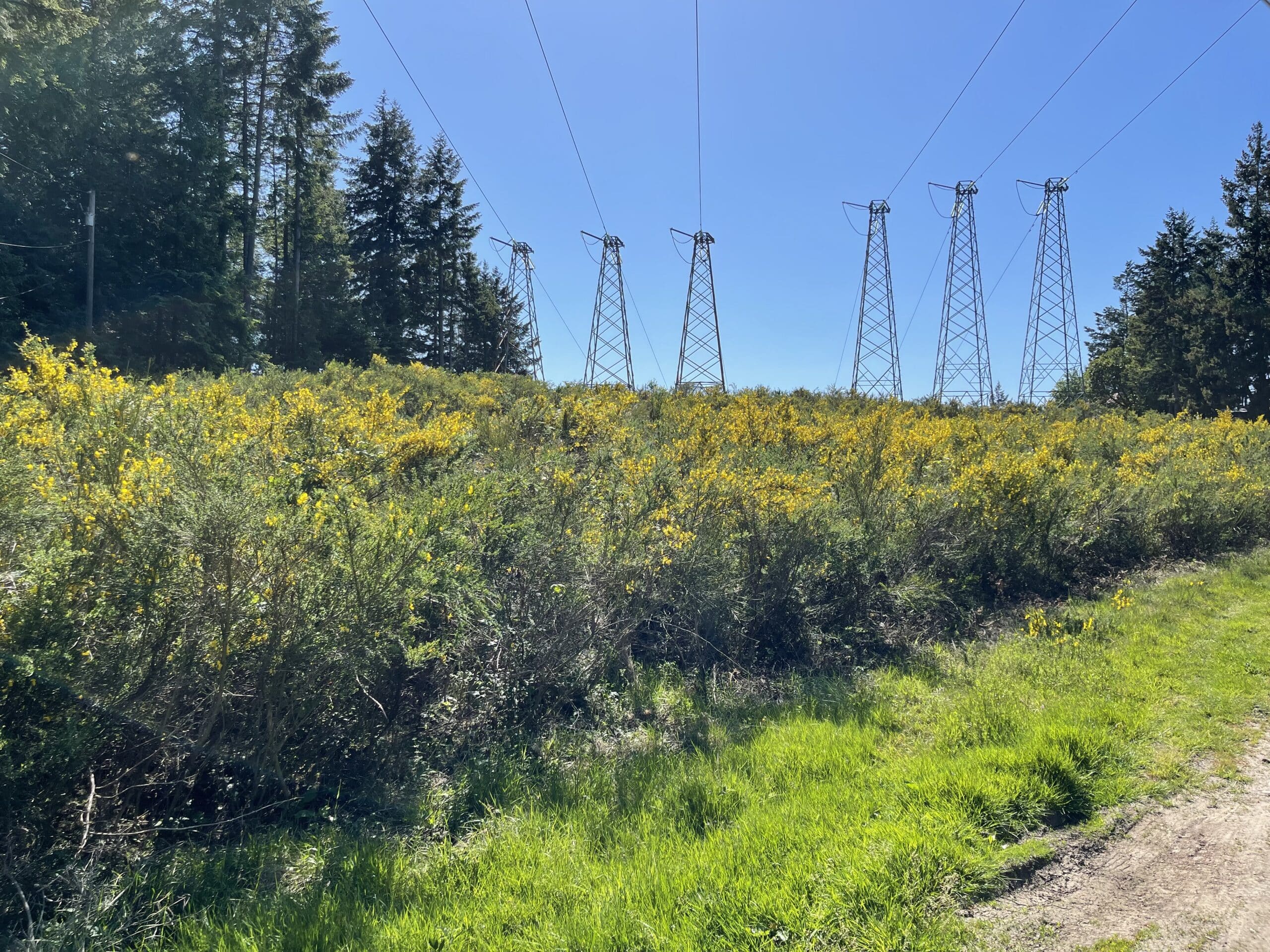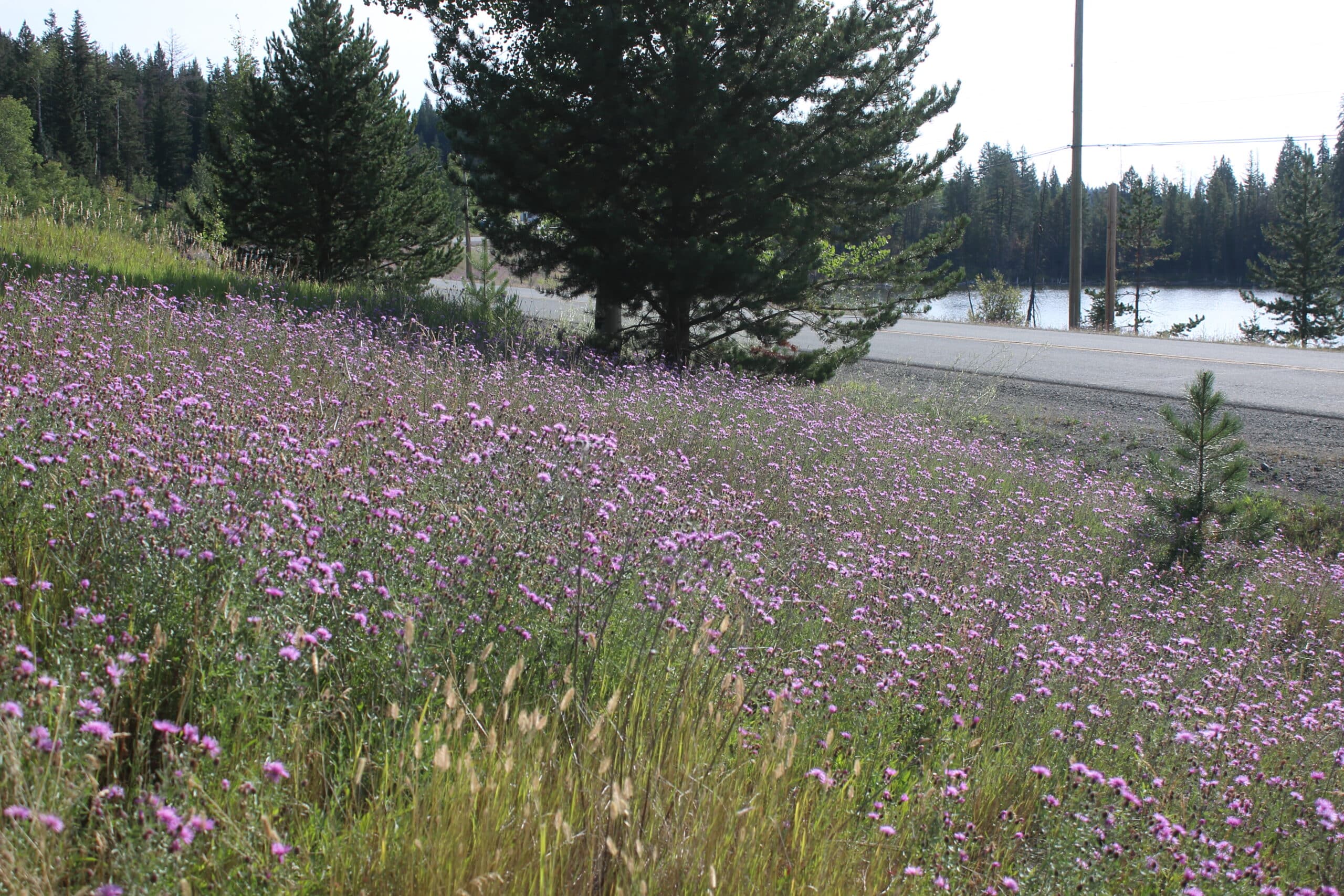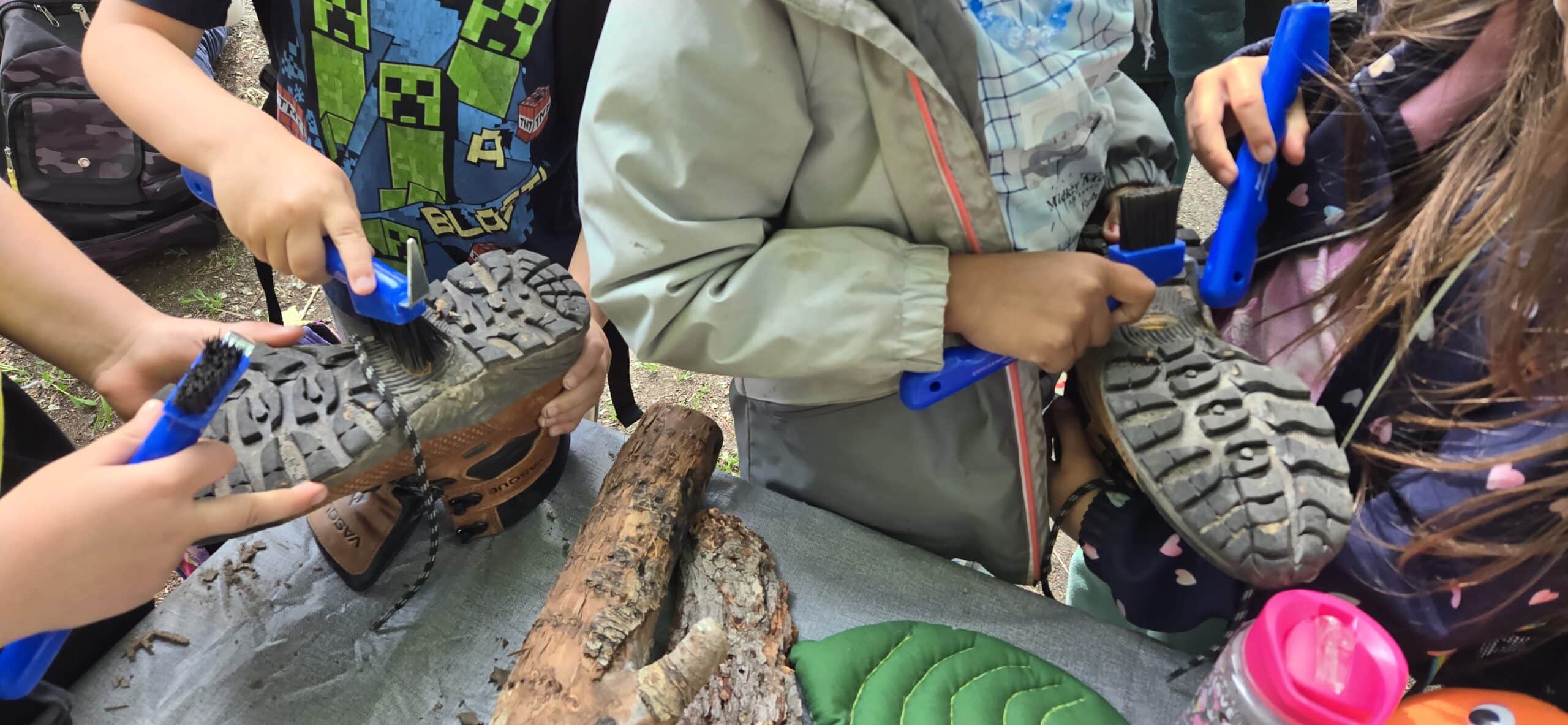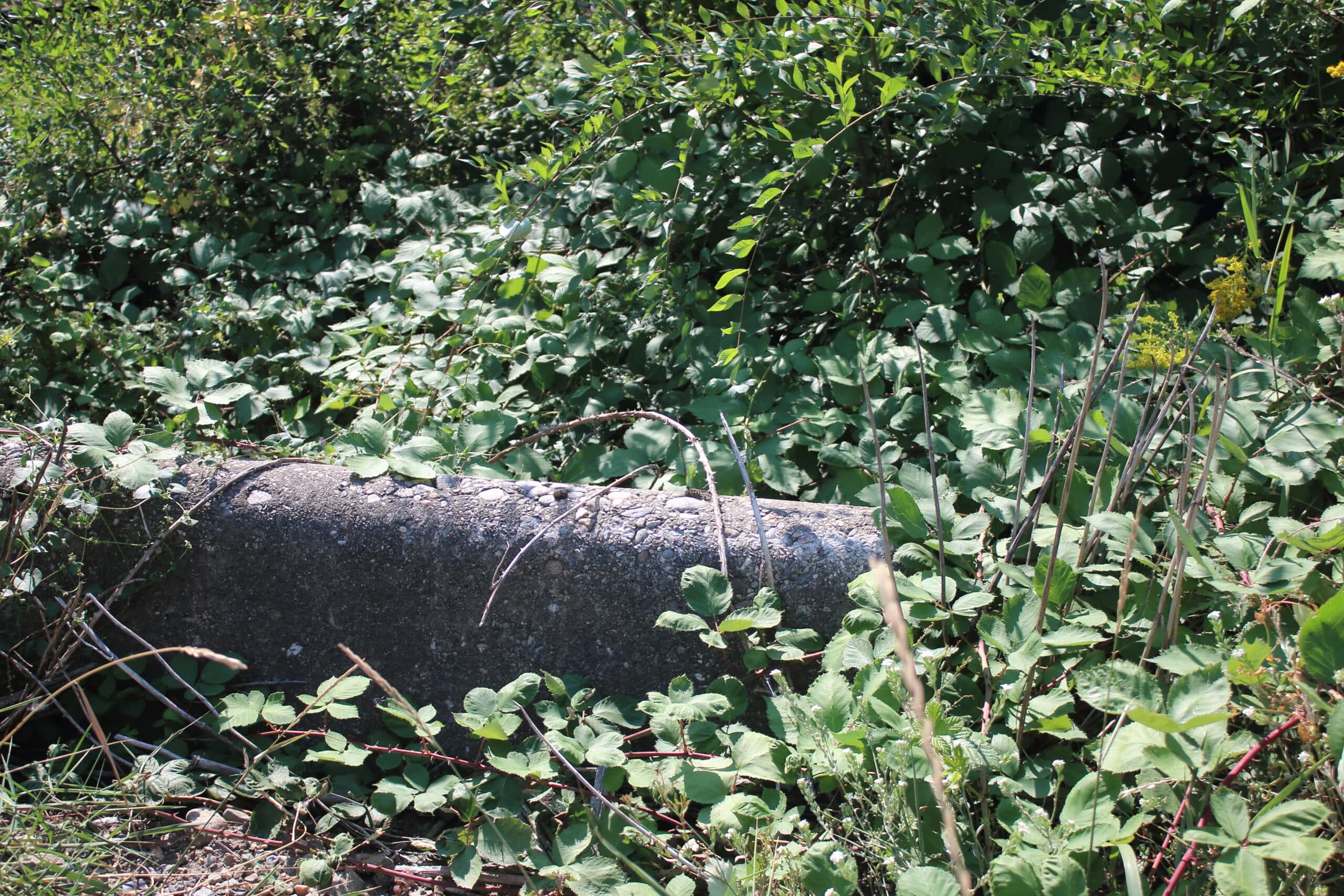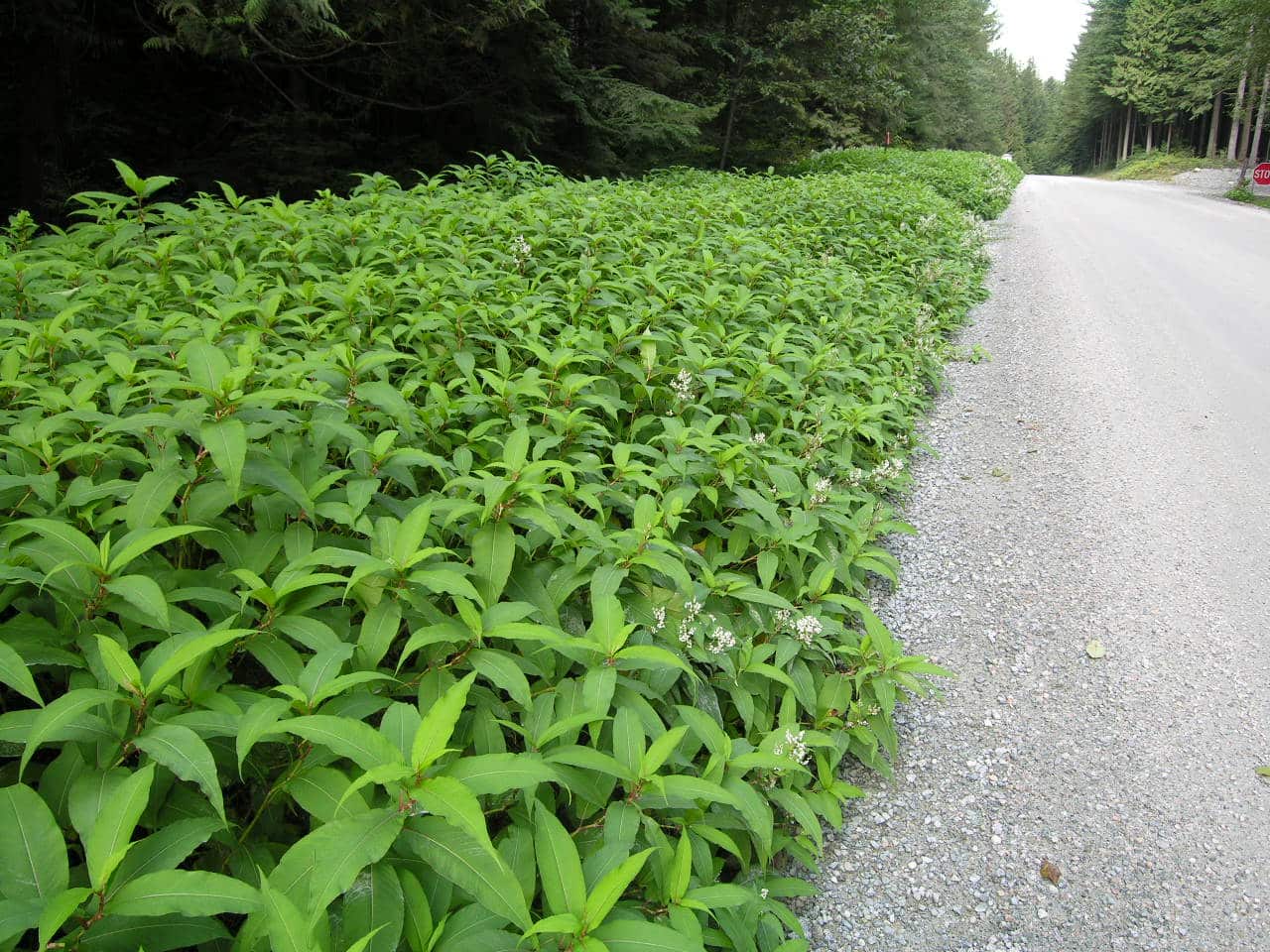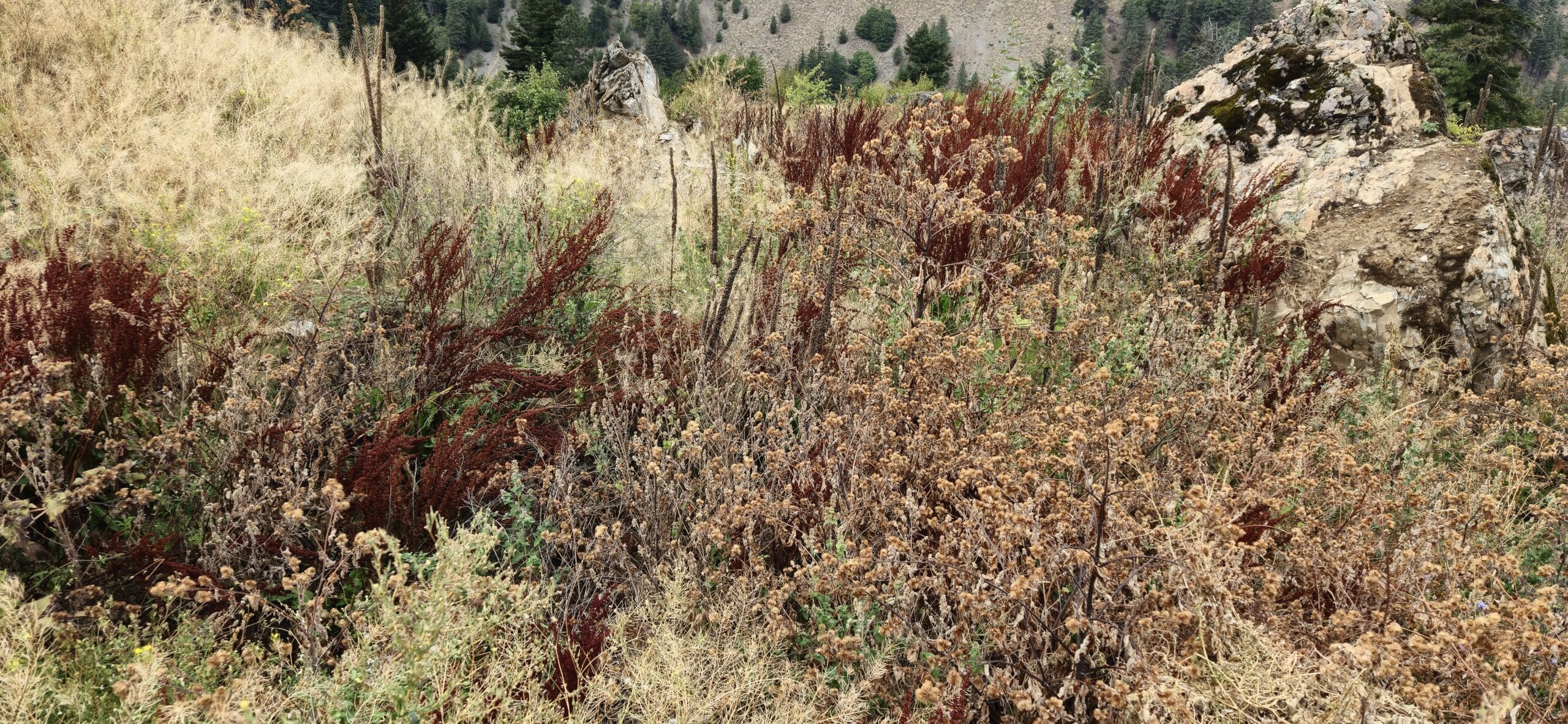Black locust
About This Species
Native to the Southeastern United States, the black locust is a hardy tree that can grow in a variety of soil conditions and thrives in open areas. Originally, black locust was introduced across North America as an ornamental tree species, as well as to help reclaim disturbed lands, like old mining sites.
What makes black locust so successful at spreading? For starters, it can reproduce from its roots, forming dense stands that outcompete native plants. Additionally, it produces seedpods in the fall that can survive through the winter. These seeds may fall and grow near the parent tree but can also spread long distances by wind, birds or other animals.
Black locust can also change the soil it grows in! It can increase nitrogen, phosphorus, and calcium levels, creating ideal conditions for other invasive plants. Watch out for the sharp spines on its young sprouts – they can harm people and wildlife. The tree also contains toxins that are dangerous to humans and horses.
How to Identify
Black locust trees grow 12 to 30 m tall with a trunk diameter of 30 to 60 cm. They tend to grow straight in forests but can grow curved in open areas.
Flowers are white, clustered in groups of 10 to 25, and each flower is 2 to 2.5 cm across. Flower clusters are 10 to 20 cm long.
Leaves are pinnately compound (single main stem with smaller leaflets along both sides), featuring 3 to 9 pairs of smooth-edged, oval leaflets, plus a terminal leaflet.
Seeds are smooth, flat, and dark brown, measuring 5 to 10 cm long.
Older trees have grey-brown, thick, deeply furrowed bark, while younger trees have smooth, brown or greenish bark.

Take Action
Prevention is the best approach.
If you need advice about invasive species on your property or you are concerned about reported invasives in your local area, contact your local government or regional invasive species organization.
-
If you need advice about invasive species on your property or you are concerned about reported invasives in your local area, contact your local government or regional invasive species organization.

PlayCleanGo
Learn about best practices

Plantwise
Learn about best practices
REPORT TO PROTECT BC’S BIODIVERSITY
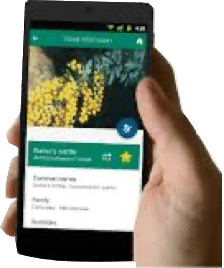
Use the app
Observe and report to protect BC’s biodiversity

Report through this website
Use our form to tell us what you’re seeing and where.



